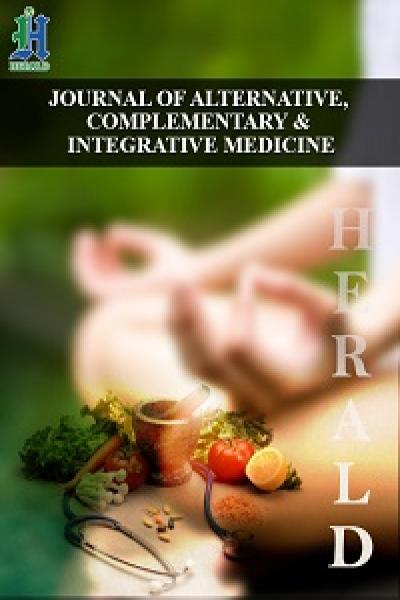
A Short Commentary on “Efficacy of Chotosan in Dizziness Induced by Head Rotation or Extension in the Standing Position: A Retrospective Study”
*Corresponding Author(s):
Kazuhiro HirasawaDepartment Of Otorhinolaryngology, Toda Central General Hospital, Saitama, Japan
Tel:+81 0570011114,
Fax:+81 0484430104
Email:hirakazu@tokyo-med.ac.jp
Dizziness or vertigo encompasses a spectrum of symptoms, with central vascular vertigo representing a subset characterized by its relatively rare occurrence yet significant impact on patient quality of life. While the overall prevalence of dizziness among adults ranges from approximately 15% to over 20% annually [1], central vascular vertigo, attributed to cerebrovascular disorders, remains less frequent, affecting only 3-7% of individuals presenting with dizziness [2]. However, its clinical manifestations, often provoked by maximal head rotation or extension in the standing position, can lead to nystagmus, dizziness, and postural instability. These symptoms are typically attributed to transient ischemia of the vertebrobasilar artery resulting from mechanical compression of the vertebral artery.
Chotosan, a blend of 11 crude drugs, has long been used in Kampo medicine for various conditions, including hypertension and cerebrovascular diseases. Through its relaxing effect on the basilar arterial wall [3] and the vasodilatory properties of its components, particularly Uncaria hook [4], Chotosan may alleviate symptoms associated with vertebrobasilar insufficiency (VBI), including dizziness induced by head rotation or extension in the standing position. Notably, the original text referencing Chotosan, "Fusai honjihou," does not explicitly mention this indication, underscoring the need for clinical investigation into its potential utility. In our study [5], the efficacy of Chotosan in managing dizziness induced by head rotation or extension in the standing position was evaluated. By exploring this novel application of Chotosan, the study aimed to expand the therapeutic repertoire for central vascular vertigo and contribute to improved patient outcomes.
The study's primary endpoint, the presence of dizziness induced by head rotation or extension, showed a significantly higher occurrence in patients who reported satisfaction with Chotosan treatment compared to those who did not. This suggests that Chotosan effectively alleviate dizziness associated with VBI, supporting its traditional use in such cases. However, the study's retrospective nature and small sample size limit the generalizability of these findings. Moreover, the inclusion of patients from a single center raises concerns regarding potential selection bias.
The study's secondary endpoints, including the presence of headache, age, stiff shoulders, and hypertension, did not show significant differences between the effective and ineffective treatment groups. Nonetheless, the trend towards a higher prevalence of headache in the effective group warrants further investigation, especially considering previous reports of Chotosan's efficacy in managing morning headaches [6].
Overall, while this study provides preliminary evidence for the effectiveness of Chotosan in managing dizziness induced by head movement, further well-designed prospective studies with larger sample sizes are needed to confirm these findings. Additionally, exploring Chotosan's efficacy in other populations and its potential mechanisms of action through controlled trials would enhance our understanding of its therapeutic utility in managing dizziness and related symptoms.
In conclusion, the study sheds light on the potential of Chotosan as a therapeutic option for central vascular dizziness, offering a promising avenue for future research and clinical practice in the management of this challenging condition.
Conflict of Interest
The authors declare no conflict of interest.
References
- Neuhauser HK (2016) The epidemiology of dizziness and vertigo. Handb Clin Neurol 137: 67-82.
- Karatas M (2011) Vascular vertigo: epidemiology and clinical syndromes. Neurologist 17: 1-10.
- Higasa M, Hatake K, Higasa K, Shinka S, Hishida S (1987) Effect of Tyoto-san on Human Cerebral Arteries. J Jpn Coll Angiol 27: 453-456.
- Aisaka K, Hattori Y, Kihara T, Ishihara T, Endo K, et al. (1985) Hypotensive action of 3alpha-dihydrocadambine, an indole alkaloid glycoside of uncaria hooks. Planta Med 51: 424-427.
- Hirasawa K, Otsuka K, Yoshino K, Chiba Y, Tsukahara K (2021) Efficacy of chotosan in dizziness induced by head rotation or extension in the standing position: a retrospective study. Int Med J 29: 105.
- Kimura Y, Shimizu S, Tanaka A, Fujii A (2008) Evaluation of efficacy of chotosan for the treatment of patients with headache by multiple regression analysis. Kampo Med 59: 707-713.
Citation: Hirasawa K, Tsukahara K (2024) A Short Commentary on “Efficacy of Chotosan in Dizziness Induced by Head Rotation or Extension in the Standing Position: A Retrospective Study”. J Altern Complement Integr Med 10: 468.
Copyright: © 2024 Kazuhiro Hirasawa, et al. This is an open-access article distributed under the terms of the Creative Commons Attribution License, which permits unrestricted use, distribution, and reproduction in any medium, provided the original author and source are credited.

